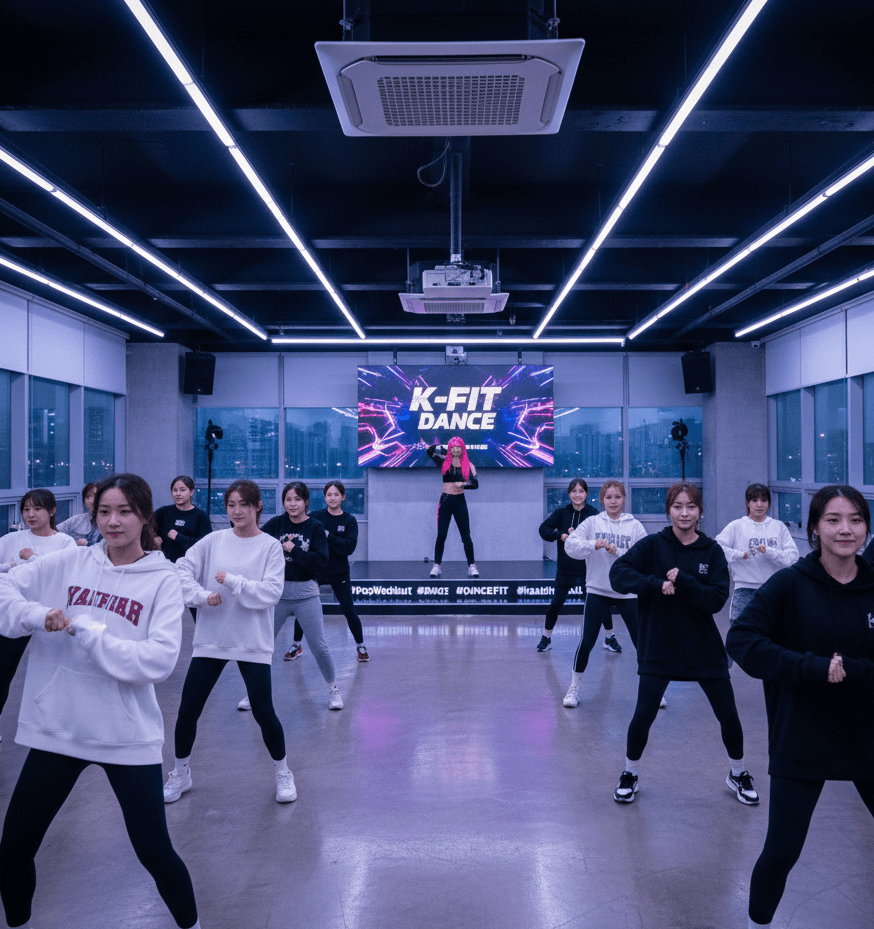In 2026, Korea’s fitness scene is not only about building muscles — it’s about building joy, rhythm, and community. The new wave of K-Fit routines and dance-inspired workouts is transforming the way people exercise across Asia and beyond.
Fueled by K-pop, social media, and a growing interest in holistic well-being, Koreans are blending movement, music, and mindfulness to make fitness fun again. These aren’t just workouts — they’re experiences that strengthen both the body and the spirit.
The Evolution of Fitness Culture in Korea
Korea’s fitness journey has evolved dramatically over the last decade. Once focused primarily on aesthetic goals and gym training, the trend has shifted toward sustainable and expressive fitness.
Modern Koreans see exercise as a way to release stress, improve posture, boost mental health, and connect socially. This shift has inspired a new generation of K-Fit routines — workout programs that reflect Korean values of creativity, energy, and community.
Gyms and studios in Seoul, Busan, and Daegu now offer lively classes that mix music, choreography, and wellness coaching in an atmosphere closer to a party than a workout.
The Rise of Dance Workouts
1. K-Pop Dance Fitness
Perhaps the most globally recognized trend, K-pop dance workouts combine cardio and choreography inspired by Korea’s biggest music stars.
Instructors break down popular dance moves from idols and group them into rhythmic routines that burn calories while teaching real dance skills.
Beyond fitness, these classes empower participants to express themselves — and feel like their favorite K-pop performers for an hour.
- ❂ Benefits: Improves coordination, cardiovascular health, and confidence.
- ❂ Who loves it: Teens, young adults, and even tourists looking for a cultural fitness experience.
- ❂ Fun fact: Many Seoul studios now offer “Dance & Film” sessions where participants record their final routines professionally.
2. Cardio Hip-Hop and Street Dance Workouts
Street dance-inspired routines are booming among urban professionals seeking a stress release after work.
These workouts combine freestyle hip-hop, aerobic bursts, and strength moves, keeping the heart rate high while improving rhythm and core stability.
Unlike traditional aerobics, there’s no pressure to be perfect — the focus is on fun, freedom, and flow.
- ⚪ Key benefits: Boosts stamina, relieves stress, and enhances self-expression.
- ⚪ Music style: High-energy Korean hip-hop and EDM remixes.
- ⚪ Best for: Those bored with repetitive gym workouts.
3. Traditional Meets Modern: Han-Pop Fusion
A uniquely Korean innovation is the blend of traditional dance and modern fitness.
Called “Han-Pop,” these routines use Korean drum beats, fan dance movements, and classical gestures paired with upbeat modern rhythms.
The result is a cultural cardio session that strengthens core muscles while celebrating heritage.
- ❂ What makes it special: Connects participants to Korean culture and rhythm.
- ❂ Focus areas: Posture, flexibility, and mindfulness through movement.
K-Fit: The New Korean Fitness Identity
“K-Fit” refers to the broader Korean philosophy of fitness that goes beyond workouts. It’s a lifestyle approach combining exercise, balanced nutrition, mental well-being, and beauty care.
The K-Fit mindset emphasizes consistency over intensity — doing something every day that strengthens the body and uplifts the mood.
Many Korean fitness coaches integrate elements like stretching, breathing, skincare, and meal balance into their programs. The idea is to treat the body as a system that thrives on alignment — not punishment.
- ⚪ Key pillars of K-Fit:
- Balanced workouts: a mix of cardio, core, and flexibility.
- Mindful eating: clean Korean-inspired meals emphasizing vegetables and protein.
- Self-care rituals: skincare, relaxation, and stress management.
- Social motivation: group workouts and online challenges to stay consistent.
K-Fit routines often include 30–45-minute daily sessions — short enough to be manageable but effective enough to show visible results within weeks.
The Power of Music and Community
What makes Korean fitness culture stand out is its sense of connection and rhythm.
Music is central to nearly every class — not just as background, but as a driver of emotion and energy.
Participants often report feeling more motivated and emotionally uplifted, thanks to the infectious beats and group atmosphere.
Studios encourage team spirit — participants cheer for one another, exchange energy, and celebrate progress together.
This social bond has proven to boost consistency and mental well-being, making fitness feel less like a task and more like a celebration.
Digital Fitness and Virtual Communities
In Korea’s tech-savvy society, digital fitness platforms are just as popular as in-person studios. Apps and online communities have turned home workouts into social events.
Many K-Fit programs stream live dance classes, allowing users from around the world to join in real time.
Social challenges such as “21-Day K-Fit Dance Burn” or “Morning Groove 30” help participants stay accountable and connected.
Wearable devices, AI-driven trainers, and motion sensors now analyze form and provide real-time feedback. This combination of technology, entertainment, and health data makes Korean fitness one of the most advanced in the world.
Celebrity Influence and Media Inspiration
Korean idols and actors play a huge role in shaping fitness culture.
Fans are inspired by stars who showcase healthy lifestyles on social media, often sharing their dance practice sessions, pilates routines, and balanced meals.
Popular trends like “idol body stretching” and “fit choreography challenges” motivate people to move every day.
For many, fitness has become a form of self-expression and emotional release, inspired by the creativity of Korean entertainment culture.
The Mind-Body Connection in K-Fit
A key element of the K-Fit philosophy is mindfulness in motion.
Many trainers emphasize proper breathing, posture, and emotional alignment during each session.
The goal isn’t just physical transformation but also mental clarity and happiness.
- ❂ Before workouts: Gentle breathing or meditation to center energy.
- ❂ During workouts: Focus on rhythm and flow rather than perfection.
- ❂ After workouts: Cool-down stretching, reflection, or gratitude journaling.
This holistic approach turns exercise into a form of self-care — promoting both physical vitality and emotional balance.
Home-Friendly K-Fit Routines to Try
You don’t need a studio or fancy equipment to follow Korean fitness trends. Here are simple routines inspired by K-Fit coaches:
- ⚪ K-Pop Cardio Burst (15 min): Choose your favorite song and mimic dance moves for an energetic cardio session.
- ⚪ Morning Stretch Flow (10 min): Combine light yoga poses with breathing to awaken the body.
- ⚪ Core and Groove Routine (20 min): Alternate between planks, squats, and light dance movements.
- ⚪ Night Calm Session (10 min): Gentle stretches with low music to release stress before sleep.
The secret is consistency — even 10 minutes of movement daily can transform energy levels and mood.
The Future of Fitness in Korea
Looking ahead, Korean fitness trends are expected to expand globally as part of the broader K-wellness movement.
Studios are experimenting with AI-powered training, immersive music experiences, and hybrid online-offline memberships.
Yet the essence remains the same — joyful, rhythmic, community-based movement that keeps both body and mind in sync.
Fitness in Korea has evolved from a chore to a celebration — an art of moving with purpose, passion, and positivity.
Final Thoughts
K-Fit and dance workouts show that fitness doesn’t have to be about strict routines or perfection. It can be about joy, rhythm, and connection.
Koreans are proving that when you move with happiness, consistency follows naturally — and results come effortlessly.
Whether you’re dancing to your favorite K-pop track or flowing through a calming stretch, remember: the real goal isn’t just a strong body, but a balanced, confident, and joyful life.
Move like a Korean — with rhythm, grace, and heart.













